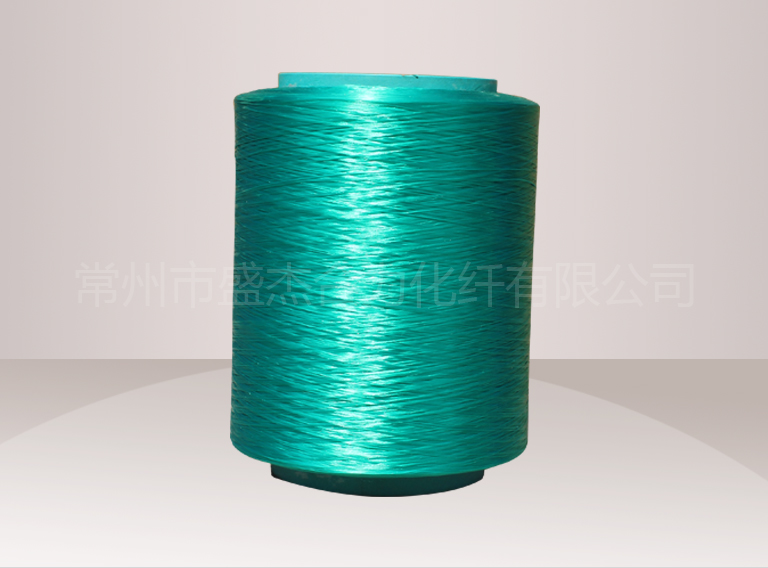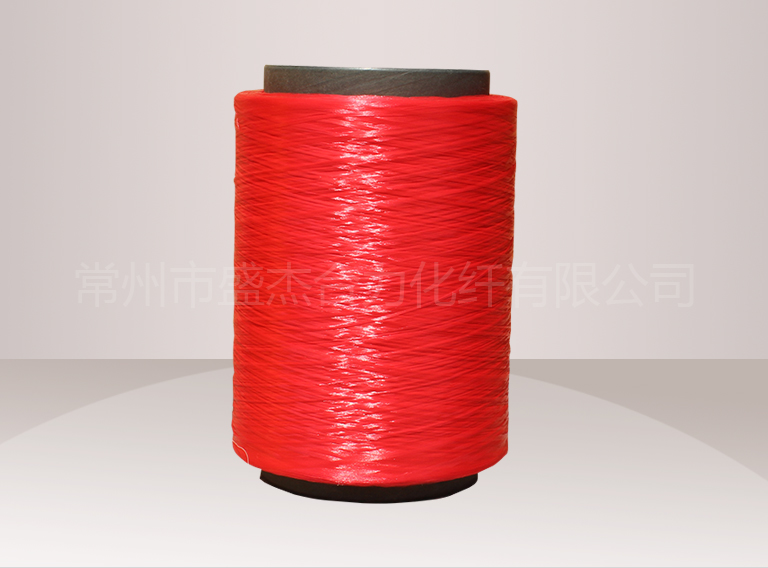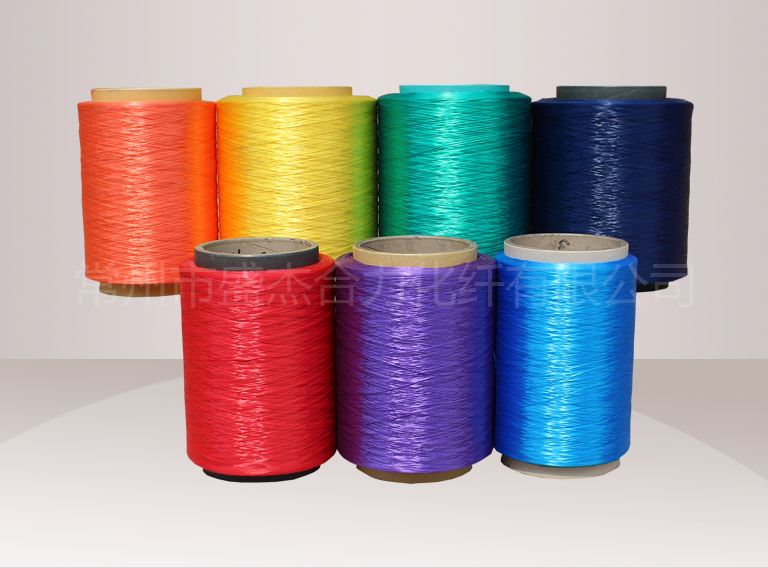- Green and low-carbon, the textile industry is accelerating its
- The core application fields of high-strength polyester industrial filament: The core of industrial "skeleton materials"!
- High-strength polyester industrial filament: Industrial fibers suitable for the needs of the Start of Autumn!
- The export situation of China's textile and garment industry in the first half of the year!
- High-strength polypropylene industrial filament: A high-strength fiber material for the industrial field!
- The production situation in the textile industry remains stable!

- Contact: Mr Li
- Tel: 0086-13861046188
- Fax: 0086-0519-83347618
- Email: [email protected]
- Add: Henan Road, Wujin District, Jiangsu City, Changzhou Huangshui town No. 89
Changzhou Shengjie Heli Chemical Fiber Co., LTD. High-strength Polypropylene Industrial Filament: A reliable choice for industrial production in August!
The high temperature and humidity in August pose multiple challenges to the performance of industrial materials. The high-strength polypropylene industrial filament of Changzhou Shengjie Heli Chemical Fiber Co., LTD., with its unique material properties and process design, has demonstrated stable performance in such an environment and has become a practical choice in industrial production.
High-strength polypropylene industrial filament is made from polypropylene as raw material through melt spinning and high-magnification stretching processes. The core of its production process lies in enhancing the strength and weather resistance of the fibers. Changzhou Shengjie Heli Chemical Fiber Co., Ltd. precisely controls the spinning temperature (usually within the range of 220-260℃) and the stretching ratio, making the fiber molecular chains highly oriented along the axial direction and forming a dense crystalline structure, which lays the foundation for its high strength characteristics. Even in an environment where the workshop temperature exceeds 35℃ in August, this structure can remain stable, and the rate of fracture strength attenuation can be controlled within a relatively low range, meeting the requirements of industrial scenarios for the load-bearing capacity of materials.
In response to the high-temperature environment in August, the heat resistance stability of this industrial filament stands out. Under continuous high-temperature conditions, the thermal shrinkage rate of fibers is controlled within a reasonable range, and the industrial fabrics or ropes produced will not show significant dimensional changes due to the increase in temperature. For instance, in the container bags used for outdoor storage, high-strength polypropylene industrial filament can withstand the high temperature brought by direct midday sunlight, maintain the stability of the bag structure, and prevent the displacement of the loaded items due to shrinkage. Among the conveyor belt frame materials in high-temperature workshops, its heat resistance can reduce the performance decline caused by frictional heat generation and extend the service life of the equipment.
The high humidity environment in August poses a test to the corrosion resistance of materials, and the chemical stability of high-strength polypropylene industrial filament plays a role here. Its molecular structure does not contain polar groups, and it has good resistance to common media such as water, acids and alkalis. In a humid environment, it will not absorb moisture and mold like cotton fibers, nor will it undergo hydrolysis like some chemical fiber materials. When used as mooring ropes at docks, they can resist the erosion of seawater and humid air. In the filter cloth of sewage treatment plants, it can withstand long-term contact with chemical substances in sewage and maintain stable filtration performance.
In terms of mechanical properties, the impact resistance and wear resistance of high-strength polypropylene industrial filament are suitable for the high-intensity production requirements in August. After special treatment of the fiber surface, the coefficient of friction is reduced, and the wear rate is significantly decreased when in contact with pulleys and metal components. During hoisting operations, even when subjected to frequent forces at high temperatures, it is not easy for broken wires to occur. In the weaving of industrial filter cloth, its wear resistance can reduce the pilling caused by the friction between fibers during the filtration process and extend the replacement cycle of the filter cloth.
In the application scenarios, the lightweight feature of this industrial filament brings convenience to the operations in August. Its density is only 0.91g/cm³, which is about 30% lighter than polyester industrial filament of the same strength. The lifting slings, safety belts and other products made from it can reduce the load on workers and lower physical exertion in high-temperature environments. Meanwhile, the fibers have good flexibility and can be made into various forms of industrial products through weaving, winding and other processes, which are suitable for the seasonal production demands of agriculture, logistics, construction and other fields in August.
In the storage and processing stages, high-strength polypropylene industrial filament has a strong adaptability to the high humidity environment in August. The product is packaged in moisture-proof materials. Even if the humidity in the workshop exceeds 70% during storage, it is not easy to absorb moisture and form lumps, maintaining good uncoiling performance. During the weaving process, the binding force of the fibers has been optimized, ensuring a stable unwinding speed even in high-temperature and high-humidity environments, reducing the occurrence of broken fibers and guaranteeing the continuity of production.
During use, it is necessary to pay attention to the upper limit of the operating temperature of this industrial filament and avoid prolonged contact with high-temperature sources above 100℃ to prevent damage to the fiber performance. When cleaning, neutral detergent can be used and direct contact with strong corrosive chemicals should be avoided. In the rainy season of August, timely drying treatment after use can further maintain the stability of its mechanical properties.
The high-strength polypropylene industrial filament of Changzhou Shengjie Heli Chemical Fiber Co., LTD., through the coordinated optimization of material structure and process, effectively responded to the environmental challenges of high temperature and high humidity in August. While ensuring strength and stability, it provided a material option that is both practical and economical for industrial production, demonstrating the application value of chemical fiber materials under extreme climatic conditions.
- The core application fields of high-strength polyester industrial filament: The core of in
- Green and low-carbon, the textile industry is accelerating its
- High-strength polyester industrial filament: Industrial fibers suitable for the needs of t
- The export situation of China's textile and garment industry in the first half of the year
- High-strength polypropylene industrial filament: A high-strength fiber material for the in
- The production situation in the textile industry remains stable!
- The high-strength polypropylene industrial filament of Shengjie Heli Chemical Fiber in Cha
- The operation situation of the textile industry from January to June 2025!
- Changzhou Shengjie Heli Chemical Fiber Co., LTD. High-strength Polypropylene Industrial Fi
- In the first half of the year, China's textile industry saw steady growth in production, w



